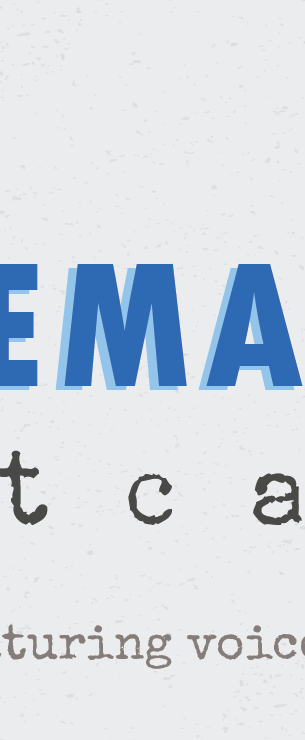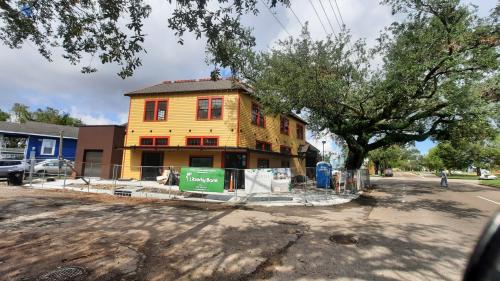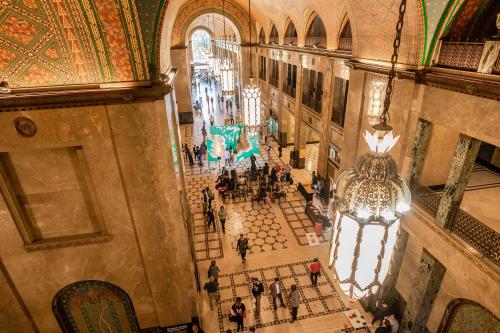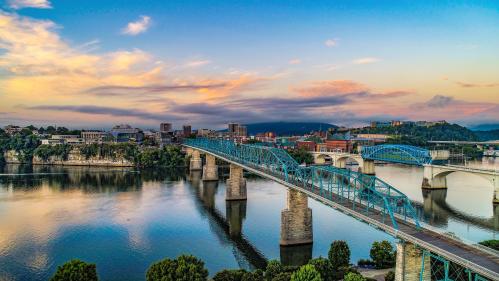Placemaking Postcards is a blog series from the Bass Center for Transformative Placemaking at Brookings where policymakers and practitioners guest-author promising placemaking efforts from across the U.S. and abroad that foster connected, vibrant, and inclusive communities. In line with the principle tenets of placemaking, the goal of the series is to recognize the community as the expert, highlight voices from the field, and to create a community of learning and practice around transformative placemaking.
 In his book Palaces for the People, sociologist Eric Klinenberg demonstrates a correlation between death rates in the 1995 Chicago heat wave and access to social infrastructure. Social infrastructure—which he defines as “the physical places and organizations that shape the way people interact”—includes places like libraries, community centers, cafés, parks, and barbershops. In Chicago communities with less access to these places, mortality rates due to the heat wave were higher (even when accounting for race and socioeconomic status), presumably because these neighborhoods lacked the deep networks, relationships, and infrastructure necessary to form the social connections needed for survival.
In his book Palaces for the People, sociologist Eric Klinenberg demonstrates a correlation between death rates in the 1995 Chicago heat wave and access to social infrastructure. Social infrastructure—which he defines as “the physical places and organizations that shape the way people interact”—includes places like libraries, community centers, cafés, parks, and barbershops. In Chicago communities with less access to these places, mortality rates due to the heat wave were higher (even when accounting for race and socioeconomic status), presumably because these neighborhoods lacked the deep networks, relationships, and infrastructure necessary to form the social connections needed for survival.
This finding takes on new relevance amid the pandemic-induced social isolation we face today. The COVID-19 pandemic took away many of these community spaces when we need them most—leaving communities without places to gather. These issues are front and center in downtown Peabody, a suburb north of Boston on Massachusetts’ North Shore.
Co-creating social infrastructure in Peabody
For years, Peabody—a city of 50,000 originally built on the leather industry—has been missing something. While the downtown has the base conditions to be a vibrant neighborhood, it lacks the social infrastructure for community members to come to and stay in the area. When the pandemic hit, what social infrastructure existed—such as the library, black box theater, and Breaking Grounds coffee shop—quickly closed and remained dormant for months. As restrictions started to lift, the desire to gather and rekindle community connections was palpable—but there was no place to do it.
Luckily, a project that had been in the works for years was ready to meet the challenge. It started in 2017 when co-author, and Peabody resident Emily Cooper reached out to CultureHouse—a nonprofit organization that works with communities to transform unused spaces to improve livability, equity, and resiliency. Emily knew that Peabody had the potential to have a lively downtown—it just needed a spark. CultureHouse and Emily teamed up to create CultureHouse Peabody: a pop-up community space that provided a space for creatives and neighbors to reconnect and set off a positive feedback loop of vibrancy downtown.
After gathering an advisory group of local activists and stakeholders, collecting observational data, conducting surveys with over 100 community members, holding informal conversations, and running a crowdfunding campaign to raise $10,000 to fund the project, we opened CultureHouse Peabody for a month-long demonstration on June 1, 2021. The space, hosted in a donated storefront downtown, was set up with a stage for performances, worktables, lounge seating, cheerful lighting, stacks of games, and local art covering the walls. Outside, a bubble machine made passersby stop and turn their heads in curiosity.
Social infrastructure drives community impact
Over the 33 days CultureHouse Peabody was open, it came alive with gatherings, live music, in-depth discussions, and new ideas. We observed four major impacts the pop-up had on the Peabody community, including:
- Supporting artists: One of the professions most affected by the pandemic was the creative industry. At CultureHouse Peabody, we supported over 50 artists to run workshops, hang shows, and play live music. For many of them, it was the first time in over a year they had been able to share their work publicly, and even longer since they’d been paid for it. It was also a rare opportunity for creatives to share work within their community—only 20% of the partners we worked with had experienced similar opportunities in Peabody in the past. The result was clear: Peabody is ready to be a hub for arts and culture—all the community needs is a space.
“It was my first real platform for both [visual] art and music. I’d never displayed in the North Shore before and had yet to perform as well. It felt incredible to have a moment to shine in my hometown!”
—Local artist
- Providing a hub for businesses and entrepreneurs: Through our weekly small business markets, the pop-up provided budding entrepreneurs with a space to sell their products without the high upfront costs of a brick-and-mortar store. Owners of existing downtown businesses also came into CultureHouse Peabody to discover strategies for incorporating social infrastructure into their services—building upon and increasing vibrancy downtown.
- Empowering teens: During our community engagement, we consistently heard that there were few spaces in Peabody where teens could hang out. To address this, we hosted artwork from the local high school, brought in a group of teens to lead a skill-share night, and created a space where youth could just … be. We heard from teens that participated in the programs that CultureHouse Peabody gave them a sense of connecting and belonging with their community.
- Downtown vibrancy: Lastly, we saw an incredible impact on downtown vibrancy and connectivity with CultureHouse Peabody. There was undeniable energy emanating from the pop-up, leading 83% of visitors to report in a survey we conducted that they met someone or made a connection there. With consistent programming, thoughtful design, and intentional partnerships, the space gave community members a glimpse into what Peabody could be with more social infrastructure. In fact, we saw a 60% increase in positive perceptions of downtown when we were open.
“It was surreal to have this kind of flexible, creative community space on Main Street and a reason to linger. It was amazing to feel, just for a moment, what it could be like to spend more time on the downtown strip—that it could be a cool hangout in the future.”
—Pop-up survey response
These impacts did not come without challenges. Being open for such a short amount of time, we initially had difficulty getting the word out about the project and had a few events with low attendance. Even though the percentage of BIPOC visitors to the space was three times the representation in the majority-white, non-Hispanic city, we also ran into challenges reaching all the racial and ethnic demographics in the city. The small BIPOC representation in existing city leadership roles and our lack of multilingual staff limited our ability to welcome all identities. Lastly, we frequently encountered misconceptions around what was possible downtown, with many residents viewing it as a place you don’t spend time in—a phenomenon made worse by the pandemic.
Though the pop-up was temporary, we hope its positive impacts will be long-lasting, and that the community can continue to build upon its success. We collected all the lessons we learned during the project into an impact report which is freely available to the public. Beyond the report, we have already seen changes in Peabody inspired by the pop-up. One business started hosting open mic nights after seeing the success we had with ours. Residents are also in the process of forming a new nonprofit to open and operate a public space downtown with many of the offerings we had at CultureHouse Peabody.
Even relatively small investments in social infrastructure can have a large impact
Though this project was geared towards Massachusetts’ North Shore, its implications go far beyond. In times when downtowns nationwide are struggling to regain visitors and economic vitality, temporary spaces like these show that even with a relatively small budget and time frame, social infrastructure can make a significant impact.
Community pop-up spaces can be brought to an array of downtowns—CultureHouse Peabody is the fourth community we have worked with to open a pop-up. Past spaces have created connections between housed and unhoused people, boosted pedestrian traffic by eight-fold, and increased representation of women and BIPOC people in the area. We believe that it’s time to create a whole new category of public space that meets the specific needs and wants of the people—all while centering the voices that are not being heard. We envision a future of vibrant, equitable, and resilient communities tied together by social infrastructure.







Commentary
How a Massachusetts town is investing in social infrastructure to rebuild its Main Street
November 15, 2021